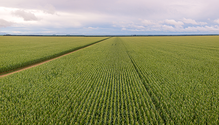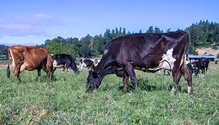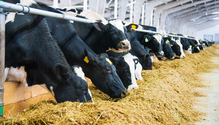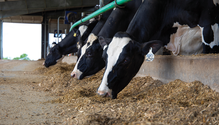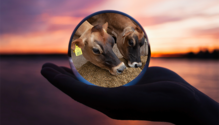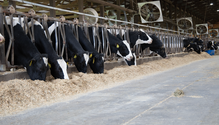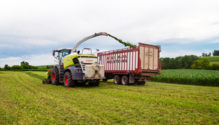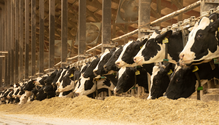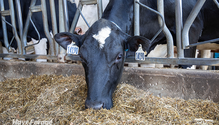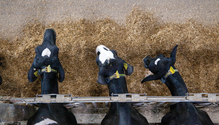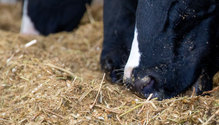Close
Earlier this year, our research team had the opportunity to attend the International Silage Conference in Gainesville, Fla. This conference has provided an amazing forum for networking and exchanging breakthrough
Ten Mile Grade Dairy started baling dry hay and making baleage in 2024 — two jobs that had been hired out until then. Hayfields are seeded to limpograss, which was established after taking a sod
One of the best ways to quickly orient someone to a lactation dairy ration is to compare it to the diets of a mama cow grazing native pasture and a feedlot steer. These are the two extremes
“Go big or go home” wasn’t the motivation for Mark Van Dam when he established Rising Sun Dairy. Quite the opposite, as the self-proclaimed “micro-dairy” was designed for
Due to the emphasis on rising milkfat percent, total milkfat production, and the value of milkfat, many dairy producers are looking for ways to capture better feed margins and greater production efficiency
High-quality forages are the foundation of a productive and healthy dairy herd. However, the way feed is managed from the field to the cow is crucial for maximizing a producer’s investment in forages
Alfalfa hay has long been a premier forage for dairy cattle
Earlier this month, I was asked to speak on the future of forage in the dairy ration. Futuristic talks are both good and bad. On the one hand, it’s difficult to know what will happen before it happe
Forages are a key part of dairy diets with implications for dairy farm productivity and sustainability
Wabasha, Minn., may ring a bell as the setting of the 1993 comedy film “Grumpy Old Men.”
The University of Wisconsin’s Randy Shaver and his colleagues developed the MILK2006 model nearly 20 years ago
Smaller margins due to higher feed costs and lower milk prices have been forcing dairy managers to find opportunities to reduce expenses
The futures market is shining a more promising light on milk prices for the second half of the year. Even with record high milk prices expected, though, the risk of weaker export sales, changes
If raising replacement heifers is such a large expense and over 50% of those expenses come from feed costs, the question should be: How can we reduce the costs of producing quality feed for dairy heifers?
High-quality corn silage and alfalfa and grass forages are staples on dairy farms; however, these feedstuffs provide inadequate fiber and excess energy for breeding-age and pregnant dairy heifers
Livestock systems across the country are ultimately anchored in the forage and feedstuffs available to them. Even as advances in the agricultural industry allow more opportunities for farms to expand
In the face of rising feed prices, dairy producers are seeking opportunities to feed low-cost forages now more than ever
The objectives of feeding cows are to provide a nutritionally balanced and relatively homogeneous ration fed in a way that suppresses selection by cows, has roughly 2% residual in the feedbunk at the end
High-quality forages are vital for dairy farm productivity and sustainability
Dairy diets today typically contain 25% to 35% corn silage on a dry matter basis, and some may exceed these levels
..
Visit our partner publications:
Hoard's Dairyman | Journal of Nutrient Management
